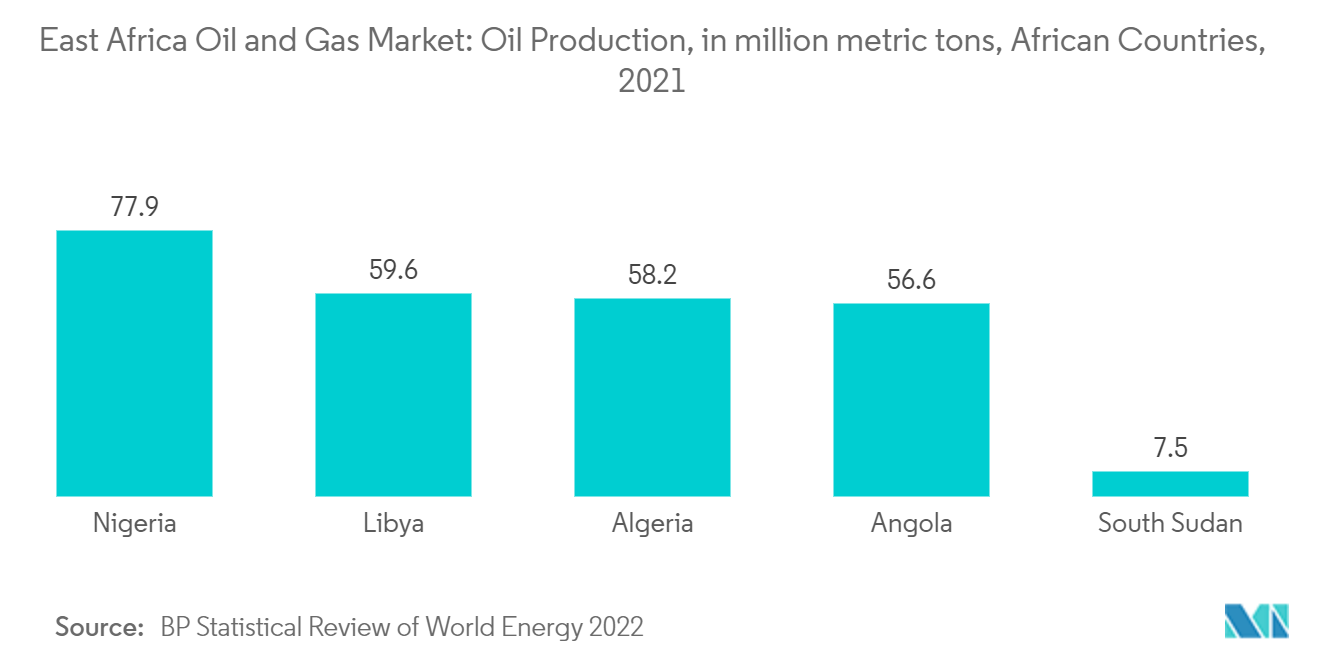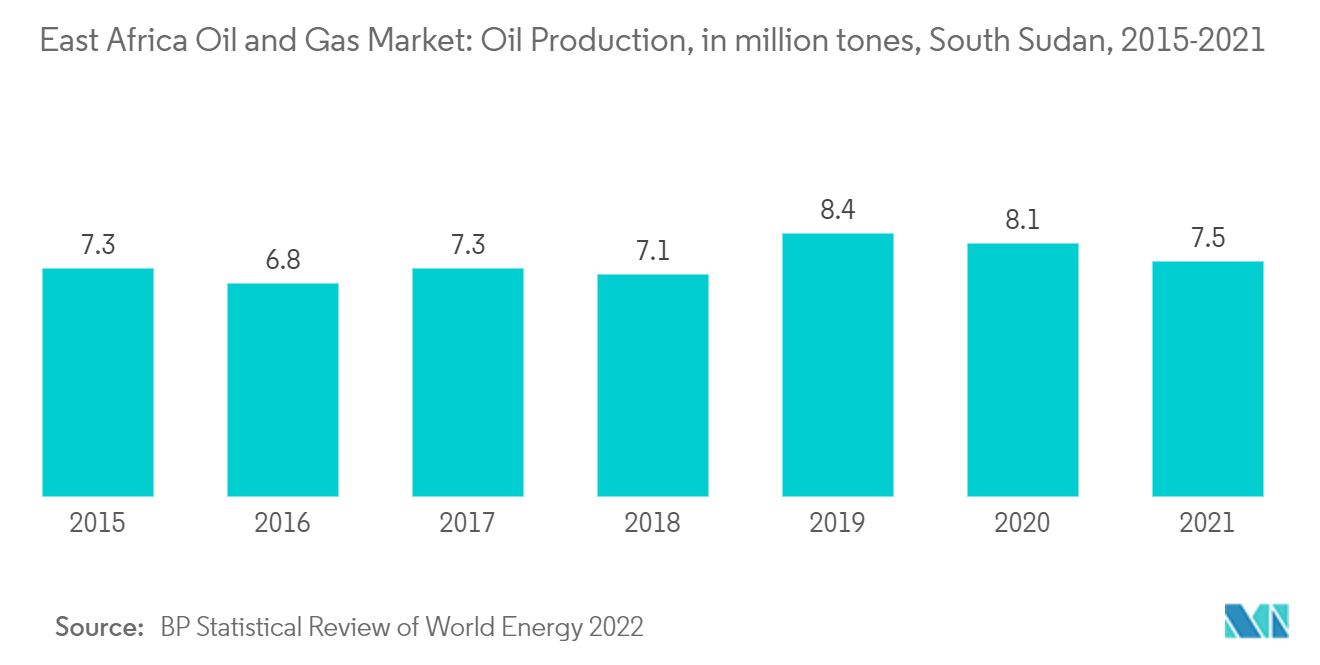Market Trends of East Africa Oil and Gas Industry
Midstream Sector to Witness Significant Growth
- East Asia's midstream oil and gas industry is important to East Africa's economy because most of the region's imports and export earnings are spent on petroleum products.The increasing demand for oil and the rising purchasing power of the citizens in the region have been boosting the growth of the market studied.
- South Sudan was the leading oil producer in East Africa as of 2021. Oil production amounted to roughly 7.5 million metric tons in the country.
- With the discovery of gas fields in the area and the government's push to cut down on imports, the East African midstream sector became very important in 2021.
- In April 2022, Sasol Ltd. announced plans to construct a gas pipeline and import natural gas via the proposed African Renaissance Pipeline (ARP) from the Rovuma Basin, opting for tanker deliveries of liquefied natural gas (LNG) to best tap into Mozambique's offshore gas reserves.
- In October 2022, the leaders of Tanzania and Kenya agreed to speed up the building of a natural gas pipeline that would help both countries trade more and save money on energy costs.The projected natural gas pipeline would run 600 kilometers between Dar es Salaam and Mombasa.
- In November 2022, the African, Caribbean, Pacific, and European Union (ACP-EU) Joint Parliamentary Assembly overturned an earlier decision and voted to allow Uganda to develop the East African Crude Pipeline (EACOP) project. The 1,443-kilometer-long pipeline runs from Uganda's Western Region oil wells to Tanzania's seaport of Tanga.
- Thus, the midstream sector is likely to grow a lot because more oil is being used in the region and more money is being put into the sector.

South Sudan to Witness Significant Growth
- South Sudan increased its oil production from 6.8 million metric tons in 2016 to 7.5 million metric tons in 2017. Increased production is expected to generate growth in the South Sudan oil and gas market during the forecast period.
- In January 2021, the Ministry of Petroleum in South Sudan announced that oil production in Unity State's Tharjiath oilfield had resumed after nearly eight years of shutdown following the outbreak of civil war in the country in 2013. Tharjiath, also known as Block 5A in southern Unity state, is operated by the Sudd Petroleum Operating Company (SPOC).
- South Sudan's oil reserves were estimated to be 3.5 billion barrels as of October 2022. This made them the third largest in sub-Saharan Africa, after Nigeria and Angola.The Ministry of Petroleum says that almost 90% of South Sudan's oil and gas reserves have not been used yet.
- Furthermore, South Sudan launched its first-ever licensing round in 2021, offering five exploration licenses, through which the government hopes to attract a diverse group of foreign investors to stimulate upstream investment and increase its crude oil production.
- South Sudan's oil and gas industry is expected to grow a lot over the next few years, especially in the midstream sector, where investment is growing and gas production is going up.


